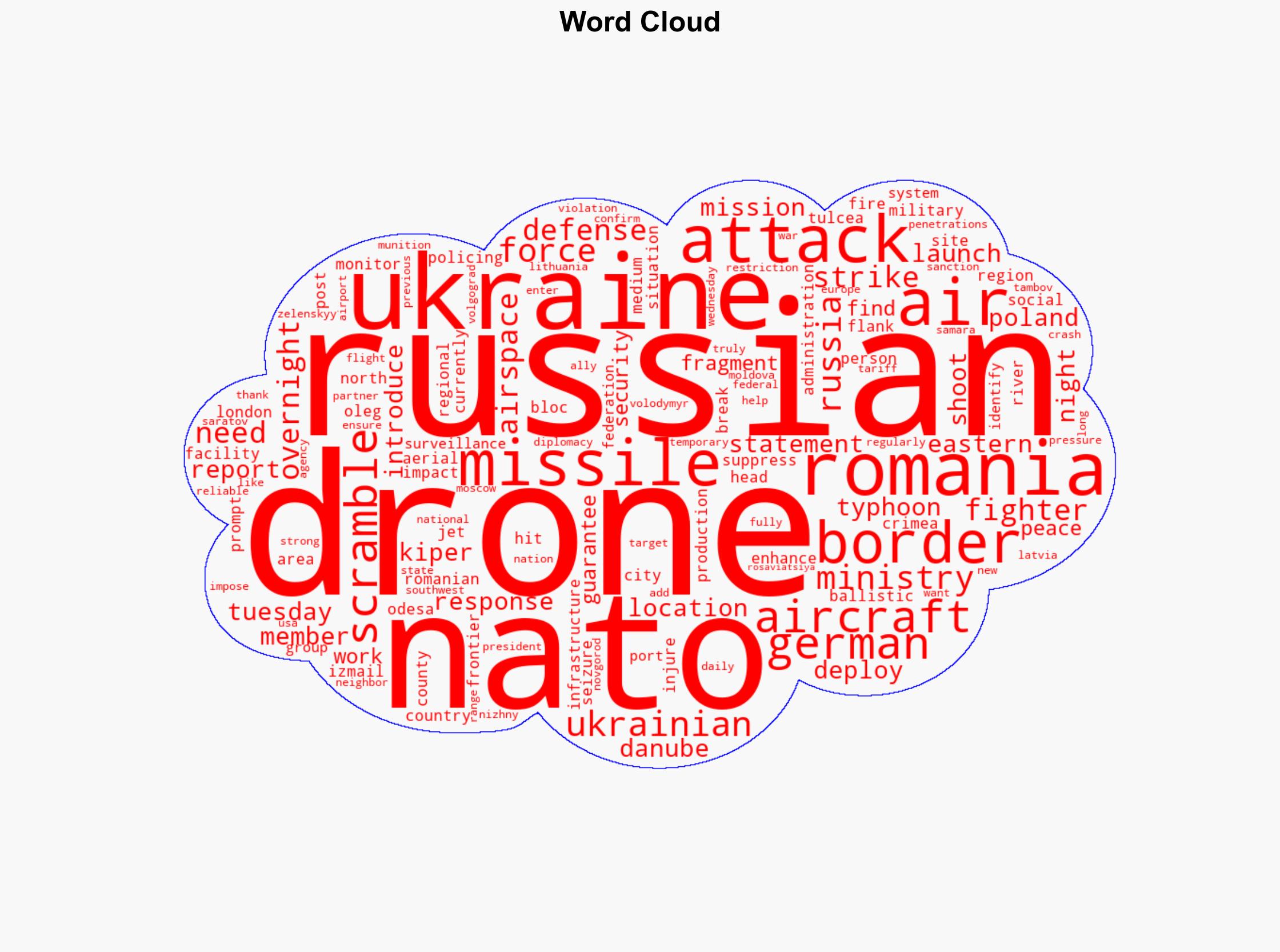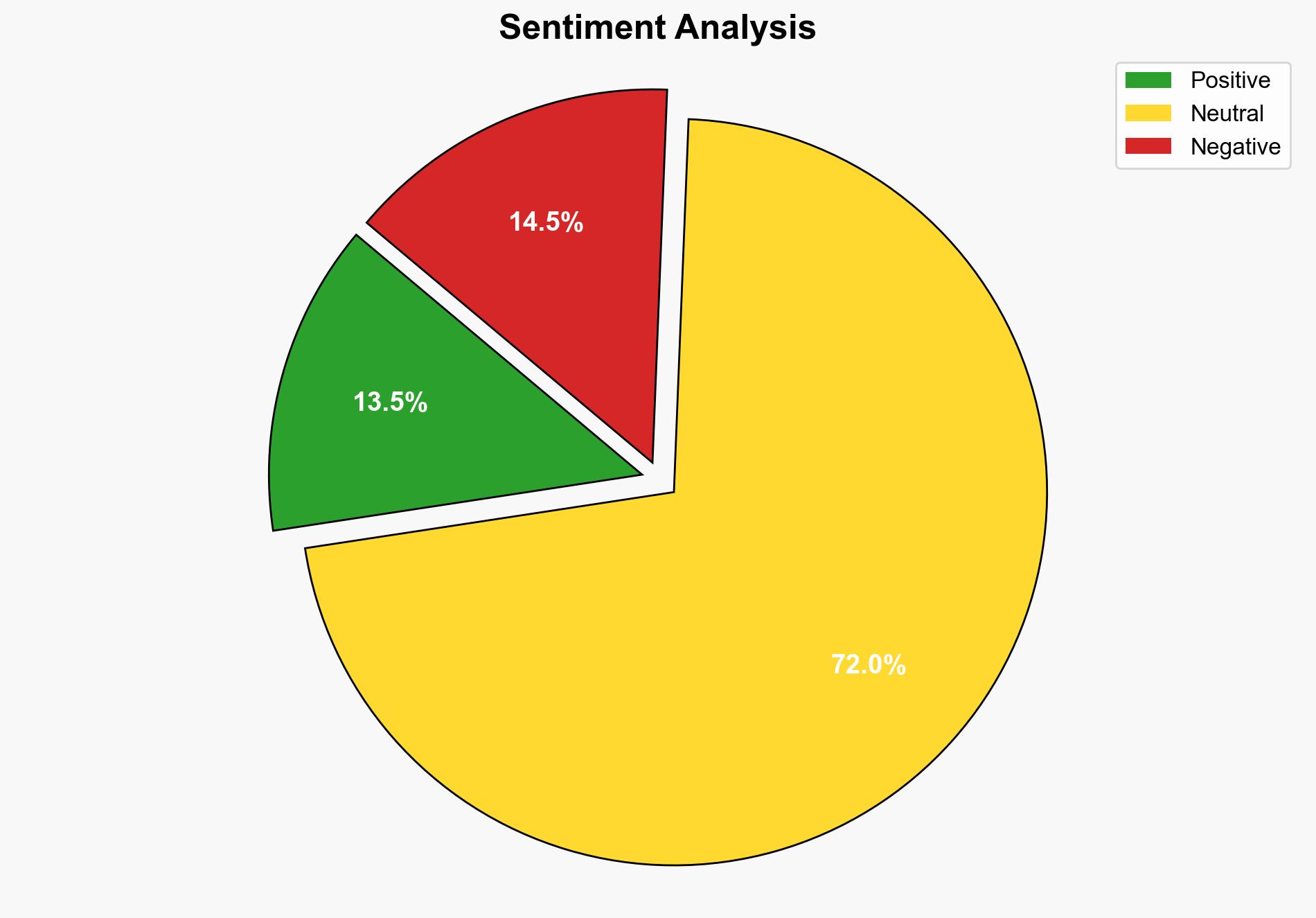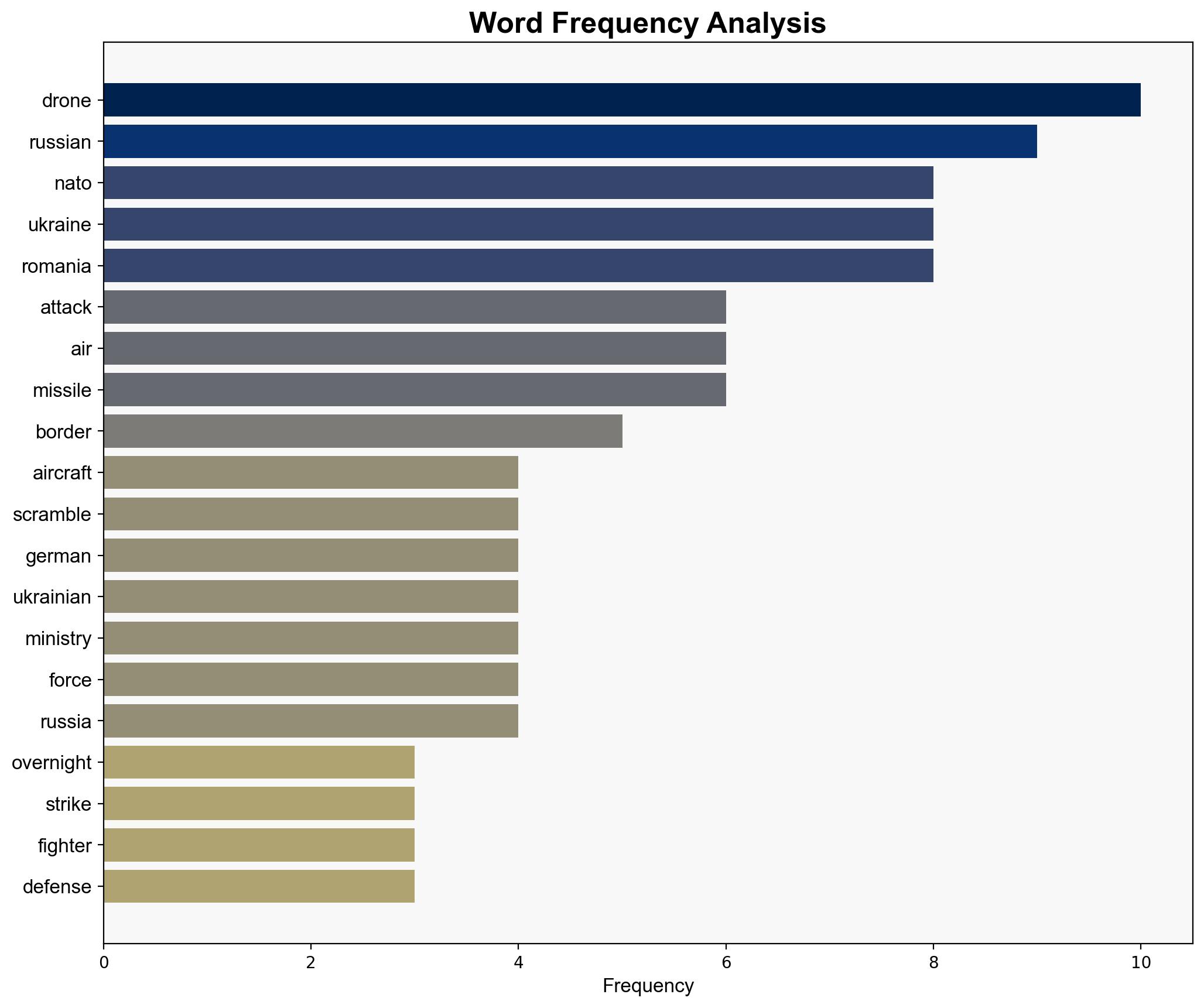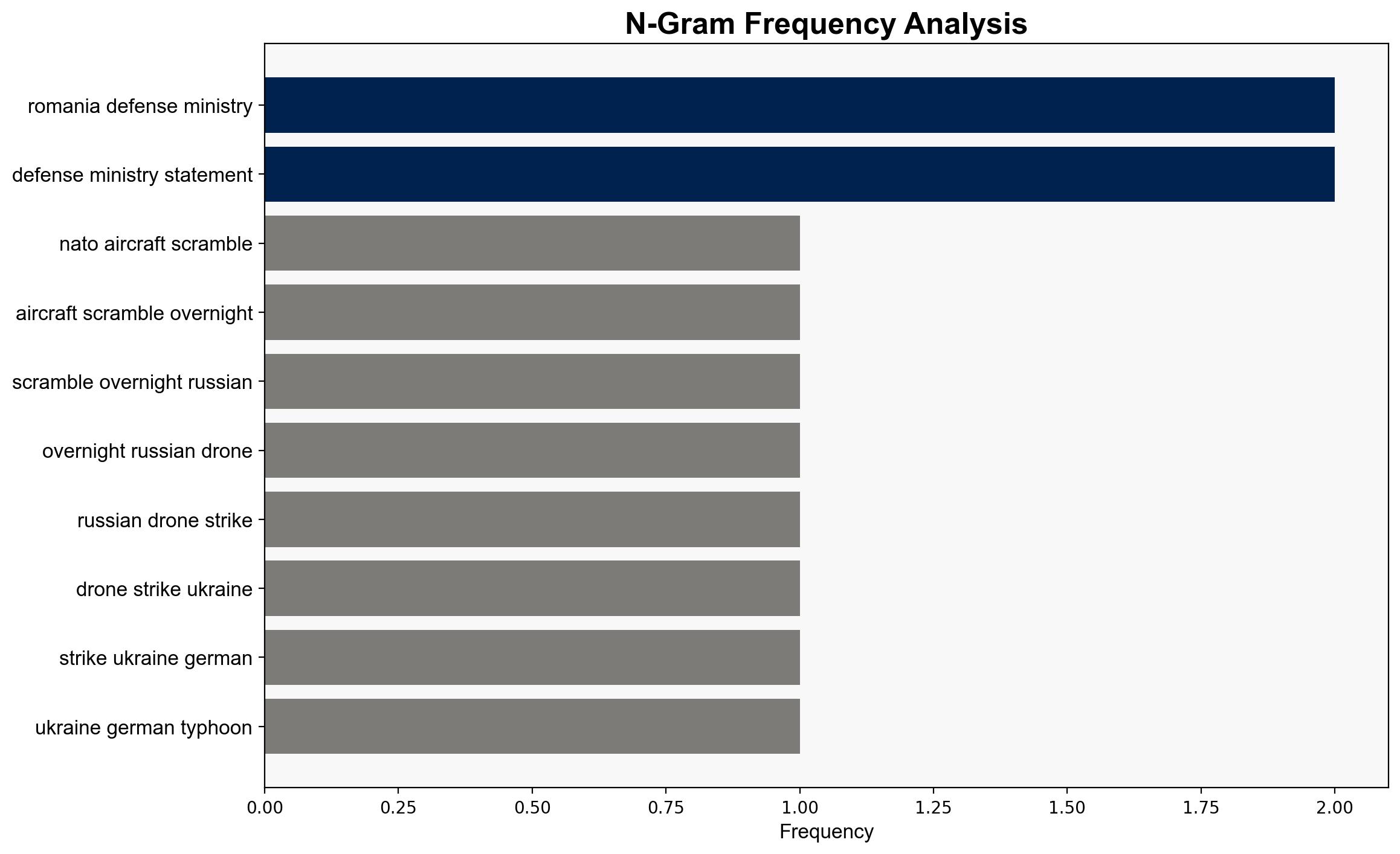NATO aircraft scrambled amid overnight Russian drone strikes on Ukraine – ABC News
Published on: 2025-08-20
Intelligence Report: NATO aircraft scrambled amid overnight Russian drone strikes on Ukraine – ABC News
1. BLUF (Bottom Line Up Front)
The most supported hypothesis is that Russia’s drone strikes near the Ukrainian-Romanian border are a deliberate strategy to test NATO’s response capabilities and resolve. Confidence level: Moderate. Recommended action: Enhance NATO’s air defense readiness and diplomatic engagement to deter further provocations.
2. Competing Hypotheses
1. **Hypothesis A**: Russia’s drone strikes are intended to provoke NATO and test its response mechanisms, potentially seeking to exploit any weaknesses in NATO’s air defense systems.
2. **Hypothesis B**: The drone strikes are primarily aimed at degrading Ukrainian infrastructure and are not specifically intended to provoke NATO, with any incursions into NATO airspace being incidental rather than intentional.
Using ACH 2.0, Hypothesis A is better supported due to the pattern of previous incidents where Russian munitions have entered NATO airspace, suggesting a deliberate strategy to gauge NATO’s response.
3. Key Assumptions and Red Flags
– **Assumptions**: It is assumed that Russia has full control over its drone operations and is aware of the potential for NATO airspace incursions.
– **Red Flags**: The lack of a direct Russian statement addressing the incursions into NATO airspace could indicate an attempt to maintain plausible deniability.
– **Blind Spots**: Limited information on Russia’s internal decision-making processes and the specific objectives of these drone operations.
4. Implications and Strategic Risks
– **Escalation Risks**: Continued incursions could lead to heightened tensions and potential military confrontations between NATO and Russia.
– **Geopolitical Impact**: These actions may strain diplomatic relations and complicate ongoing peace negotiations.
– **Economic and Cyber Threats**: Potential for Russia to leverage cyber capabilities to disrupt NATO’s response systems or economic sanctions.
5. Recommendations and Outlook
- Enhance NATO’s air defense systems along the eastern flank to deter further provocations.
- Engage in diplomatic talks with Russia to clarify intentions and reduce the risk of miscalculation.
- Scenario Projections:
- Best Case: Russia ceases provocations following diplomatic engagement.
- Worst Case: Escalation leads to direct military confrontation.
- Most Likely: Continued low-level provocations with periodic NATO responses.
6. Key Individuals and Entities
– Oleg Kiper: Head of the regional Odesa administration, reporting on the impact of the strikes.
– Volodymyr Zelenskyy: Ukrainian President, advocating for increased international pressure on Russia.
7. Thematic Tags
national security threats, regional focus, NATO-Russia relations, air defense, geopolitical strategy





